Through immersive and object-based experiences, Hurtsville Museum & Gallery's education programs and resources will help you and your students engage with history and our collection.
Due to the changes to the new Australian Curriculum (Version 9.0) Hurstville Museum & Gallery are currently offering educator-led excursions for Stage 1. If you are interested in Stage 2 - 6 excursions please contact us at museumgallery@georgesriver.nsw.gov.au. We are currently developing new programs to help meet your teaching outcomes and would love to hear what your classroom needs. Classroom resources are available for all learning stages, and can be found at the end of this page under 'classroom resources'.
If you would like to keep up to date with our current education programs, please email museumgallery@georgesriver.nsw.gov.au with the subject line ‘Education Mailing List’ to subscribe to our mailing list.
Excursions
Stimulate learning outside of the classroom in our exhibition environments, giving your group the opportunity to learn about history and art from genuine objects, which foster interesting and important conversations.
We offer both self-guided and educator-led excursions. Hurstville Museum & Gallery is free of charge to visit and we encourage schools to book a self-guided visit to explore our historical and art exhibitions.
If you are interested in bringing your group to our educator-led programs, read each stage below. Please email us for further information or to make a booking.
Stage 1 & 2
All of our excursion programs have a strong focus on historical and geographical skills enquiry and are designed within the Humanities and Social Sciences Australian Curriculum (Version 9.0).
- How does it work: Select up to three programs a day to build your own Hurstville Museum & Gallery excursion. If you select three on one day, we recommend including 'Old fashion games' as one of the modules.
- Duration of each program: 30 minutes.
- Price: daily rate of $6.50 (GST included) per student with a minimum cost of $65.00 per session. Teachers and supervising adults are free of charge.
- Supervision ratios: The supervision ratio is 1:10 for primary groups.
*We are currently developing new educator-led programs and would love to hear what your classroom needs.
Stage 1 & 2 Primary School Program:
Stage 3 - 5
Hurstville Museum & Gallery is free of charge to visit and we encourage schools to book a self-guided visit to explore our historical and art exhibitions.
We are currently developing new educator-led programs and would love to hear what your classroom needs. Classroom resources are available for all learning stages, and can be found at the end of this page under 'classroom resources'.
Stage 6
We offer a special excursion related to the current main gallery exhibition. These sessions always include a tour and a Q&A with the curator.
Museum on the Move kits
Hire a Museum on the Move kit and take history to your classroom. These can be used as a stand-alone classroom activity or in conjunction with a visit to Hurstville Museum & Gallery. The kits enhance students' experience of history through active study and interaction with high quality museum artefacts and replicas.
Price: $65.00 (GST included) for a four week loan. It is the responsibility of the hirer to collect the Museum on the Move kit/s from Hurstville Museum & Gallery and return them within the four week loan period.
For more information and to book, please contact the Museum & Gallery on (02) 9330 6444 or by email.
Available kits include:
-
Early Stage 1, Stage 1 and Stage 2: Migration stories
This kit centres around the migration story of a family from Nepal. The lessons and provided resources have been chosen to assist students to engage with history, reflect on the lives of the people in their community and to communicate their learning.
This kit is divided into three stages and can be used as a whole school resource for Early Stage 1, Stage 1 and Stage 2. All elements of the kit link directly with each Stage’s Syllabus outcomes in the key learning areas of HSIE and English. Stages ES1 and 1 also provide outcomes for Visual Arts and Performing Arts.
What’s included:
- Easy to follow teacher’s manual with suggested lesson plan and templates for each stage.
- USB with storybook and templates.
- Hurstville Museum & Gallery storybook for each stage.
- Historical sources such as newspaper articles, genuine and replica museum objects.
-
Stage 1: Keep in touch: Communication
Through investigation and reflection students will consider how changing technology impacts upon people’s lives. Students examine historical objects, photographs, replicas and working models to understand the chronological sequencing of events which have led to understanding modern communication methods. The kit comes equipped for students to create messages using a variety of communication forms and mediums, including Morse code, braille, Auslan and emojis.
The kit is tailored to the NSW Syllabus for the Australian Curriculum, specifically designed for Stage 1 HSIE.
What’s included:
- Easy to follow teacher’s manual with suggested lesson plan and templates.
- USB with historical photographs of the Georges River area and templates.
- Printed historical photographs of the Georges River area.
- Historical sources such as newspaper articles, replica letters and stamps and museum objects.
-
Stage 1: The past in the present
This kit offers students a better understanding of the history of specific sites in the St George area, focusing on the importance/significance of war memorials. Students will be introduced to the idea of memorials and commemorative sites, and will begin to develop an understanding of their significance in the community through viewing and reviewing sources, sequencing events and historical enquiry.
Students will develop historical understanding through key concepts including sources, continuity and change, cause and effect, empathy and significance.
The kit is tailored to the NSW Syllabus for the Australian curriculum, specifically designed for Stage 1 HSIE.
What's included:
• Easy to follow teacher’s manual with suggested lesson plan and templates
• USB with Georges River Council Local Studies collection photographs and templates
• Historical photographs of the Georges River area
• Maps and historical sources such as newspaper articles and oral histories
• Dress-up period costumes for children.
-
Stage 2: Community and Remembrance
This kit offers schools the opportunity to look at the change and continuity of the local area through a series of site comparisons. Utilising the Georges River Council Local Studies collection, historical sources and objects, students and teachers investigate the impact of settlement patterns, urban development and technological advancements on the geographical, social and cultural characteristic of the local area.
The kit is tailored to the NSW Syllabus for the Australian curriculum, specifically designed for Stage 2 HSIE.
What's included:
• Easy to follow teacher’s manual with suggested lesson plan and templates
• USB with Georges River Council Local Studies collection photographs, templates and maps
• Genuine and replica museum objects
• Historical photographs of the Georges River area
• Dress-up period costumes for children.
Classroom resources
Access these free, easy to use resources that can be used in the classroom for extended learning as a pre- or post- visit activity or as a lesson on their own.
-
Stages 1 & 2 (History): Exploring historical households
Exploring sources
Learn about observational skills, primary sources and where to look for more information with the facts you find around your home. Aimed at primary school students, Stages 1 & 2.
-
Stages 1 - 3 (History): Anzac Education
Anzac education
Start a conversation about Anzac Day at home, using items from Hurstville Museum & Gallery's online collection. Activities for primary school students in Years 1 - 6.
-
Stage 3 - 5 (History & Visual Arts): Our Journeys | Our Stories and Online 2022
30 April - 24 July 2022
Our Journeys | Our Stories explores the Chinese migration history of the Georges River area, interweaving social and cultural history with the work of contemporary Chinese-Australian artists Cindy Yuen-Zhe Chen, Guo Jian, Lindy Lee, Xiao Lu, Jason Phu, and Guan Wei.
This exhibition highlighted and celebrated the significance of local Chinese migration from the 19th century through to the 2000s and the ongoing contribution of the Chinese community to the Georges River area.
Educational resources
A range of educational experiences were developed for the Our Journeys | Our Stories exhibition, designed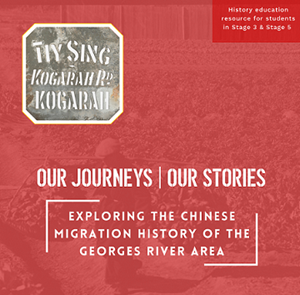 for Primary and High School educators.
for Primary and High School educators.
Educators and carers can download these resources to use as a class or for individual students. These resources encourage students to further explore the experiences of Chinese migrants from the 1800s to the present day, particularly focusing on stories from the St George area.
Primary History education resource
This educational resource has been developed for Primary School teachers. It follows the story of two Chinese migrants to the St George area through the 1800s to the 1990s.
Syllabus links:
- Stage 3 The Australian Colonies and Australia as a Nation.
- Stage 5 Depth Study 2: Making a nation and Depth Study 5: Migration experiences.
Visual Arts education resource
This resource presents a case study for each artist which includes images and a description of the exhibited work, along with a Q&A with the artist discussing their artmaking practice, methods and materials. Accompanying each artist case study is a series of activities through which students may analyse and interpret works, and apply their understanding to their own artmaking practice. This resource supports the Australian Curriculum and NSW Syllabus outcomes for Visual Arts for years 5-12. Content has been designed with reference to the four frames and the Conceptual Framework.
To view the exhibition catalogue and the virtual tour, please visit Our Journeys | Our Stories webpage.
Hurstville Museum & Gallery would like to thank Heather Davidson, Visual Arts teacher at Macquarie Fields High School, for her guidance and assistance developing these resources.
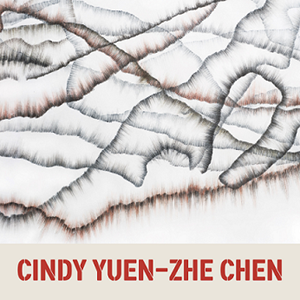


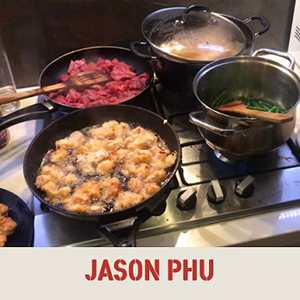
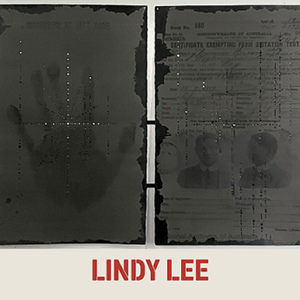

Image credits: Guan Wei, Georges River, 2021 acrylic on board (detail); Teapot, white china and basket, bamboo/straw c. 1890 - 1920, North Sydney Heritage Centre, Stanton Library Collection.
Our Journeys | Our Stories is supported by the National Foundation for Australia-China Relations, which works to strengthen understanding and engagement between Australia and China, and the NSW Government through Create NSW.
-
Stages 4 & 5 (Visual Arts): Georges River Art Prize 2019
25 October 2019 – 30 January 2020
The Georges River Art Prize is a biennial art prize that provides an opportunity for artists from all over Australia to display their best work. There are categories for painting and sculptural work, children and youth, and local artists. The Georges River Art Prize is hosted by Hurstville Museum & Gallery and the Clive James Library and Service Centre, Kogarah.
For further information, visit our page dedicated to Georges River Art prize.
Educational Resources
This educational resource has been designed for the 2019 Georges River Art Prize exhibition, which was on display at Hurstville Museum & Gallery from 25 October 2019 – 30 January 2020.
This resource focuses on the work of nine finalists, including both emerging and established artists, and provides insight into the artmaking practice of each artist through individual case studies.
Each case study includes images and a description of the exhibited work, a Q&A with the artist discussing their artmaking practice, methods and materials, and images documenting their artmaking process. Accompanying each artist case study is a series of activities through which students may analyse and interpret works, and apply their understanding to their own artmaking practice.
This resource supports the Australian Curriculum and NSW Syllabus outcomes for Visual Arts for years 7-10. Content has been designed with reference to the four frames and the Conceptual Framework.
Click on the thumbnail below to view the educational resource.
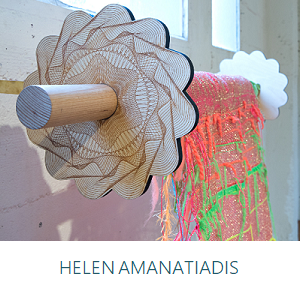
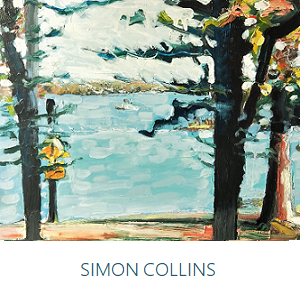
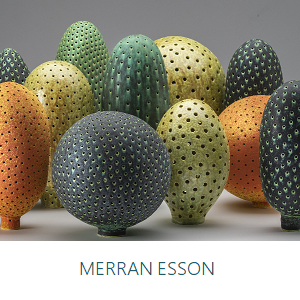
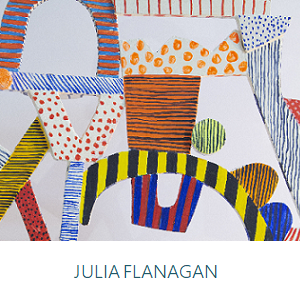
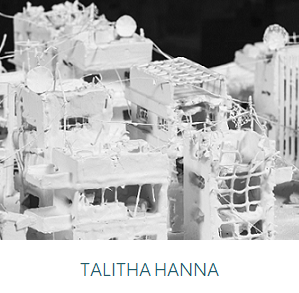
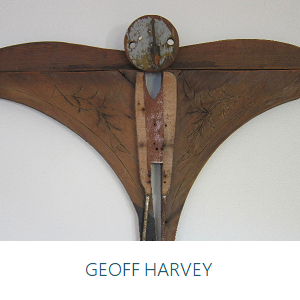

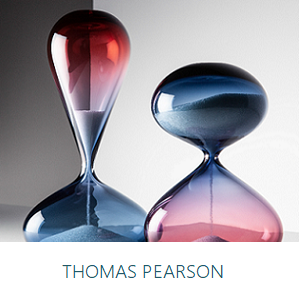
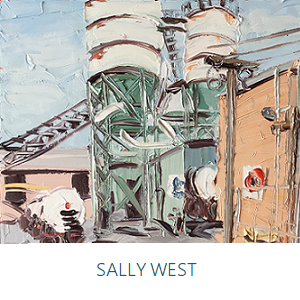
Additional information on finalists can be found on our blog:
-
Stages 4 - 6 (Visual Arts): Beyond the bowl 2019
2 February – 18 April 2019
Beyond the bowl explored and celebrated the diversity and aesthetics of contemporary ceramics and glass, showcasing the works of Julie Bartholomew, Alexandra Chambers, Cobi Cockburn, Matthew Curtis, Merran Esson, Honor Freeman, Anita Larkin, Eloise Rankine, Kirstie Rea and Emma Varga. These artists push the boundaries as to what can be achieved when working with glass or clay.
Educational resources
A free educational resource for high school students is available to accompany the exhibition Beyond the Bowl, which was exhibited at Hurstville Museum & Gallery from 2 February – 18 April 2019.
Case studies and fact sheets focus on the ten artists featured in Beyond the bowl and their artistic practice, giving insight into how they develop and create their works.These resources are designed to assist Visual Art and Visual Design teachers and students from Years 7 – 12, highlighting key syllabus-linked discussion questions.
Hurstville Museum & Gallery would like to thank Heather Davidson, Visual Arts teacher at Macquarie Fields High School, for her guidance and assistance developing these resources.
Click on the thumbnail below to view the educational resource.
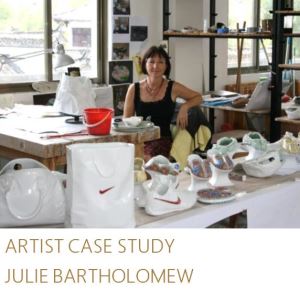
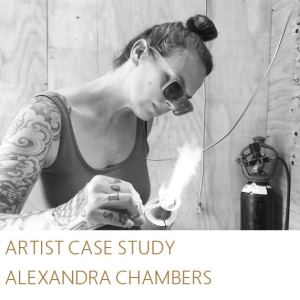
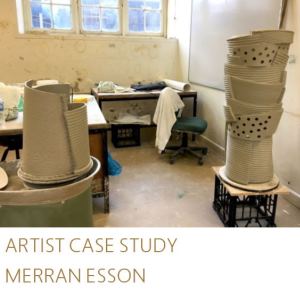
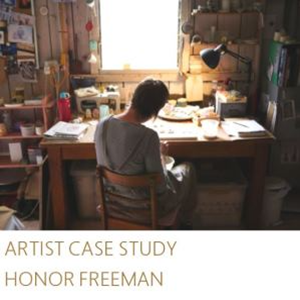
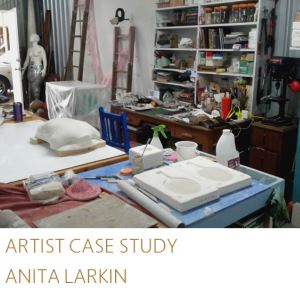


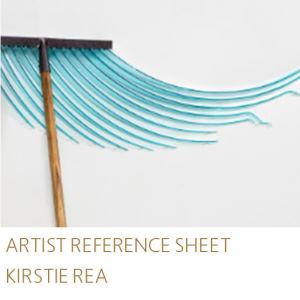

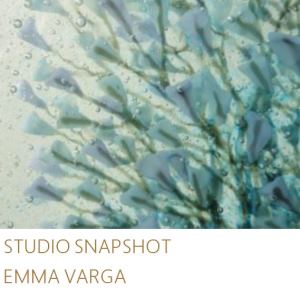
-
Stages 4 & 5 (Visual Arts): Georges River Art Prize 2021
13 November 2021 – 20 January 2022
The Georges River Art Prize is a biennial art prize that provides an opportunity for artists from all over Australia to display their best work. There are categories for painting and sculptural work, children and youth, and local artists. The Georges River Art Prize is hosted by Hurstville Museum & Gallery and the Clive James Library and Service Centre, Kogarah.
For further information, visit our page dedicated to Georges River Art prize.
Educational resources
Click on the thumbnail below to view the educational resource.

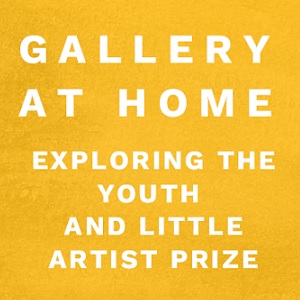
Blog entries for each winner:
Explore the 2021 Georges River Art Prize virtual experience.
-
Stage 4 - 6 (Visual Arts): Stenzil Art Prize 2021
6 February – 2 May 2021
Edgy, political, cheeky and pop-culture inspired, The Stencil Art Prize featured 55 finalists from around the globe; from photo-realist stencils with dozens of layers, to intricate hand-cut stencils on delicate paper, this biennial exhibition is the world’s largest touring stencil prize and is the authority on all things ‘stencil art’. The Stencil Art Prize community of international finalists push the boundaries of the ‘stencil definition’ utilising a diverse range of techniques, materials and technology.
Have a look at Stencil Art prize: Curator and Artist Q&A blog entry.
Educational Resources
This educational resource was created for the 2019 Stencil Art Prize which was exhibited at Hurstville Museum & Gallery from 6 February – 2 May 2021. It is designed to assist Visual Art and Visual Design teachers and students from Years 7 – 12. The images and suggested activities are to be used together with relevant syllabus documents and teaching resources, and should be used as a guide for teachers, adjusting activities to suit the needs of their students.
Each case study includes images and a description of the exhibited work, and a Q&A with the artist discussing their artmaking practice, methods and materials. Accompanying each artist case study is a series of activities through which students may analyse and interpret works, and apply their understanding to their own artmaking practice.
In addition, a number of selected works have been chosen for further study and investigation with images and questions included. This resource supports the Australian Curriculum and NSW Syllabus outcomes for Visual Arts for Years 7 – 12. Content has been designed with reference to the four frames and the Conceptual Framework.
Click on the thumbnail below to view the educational resource.
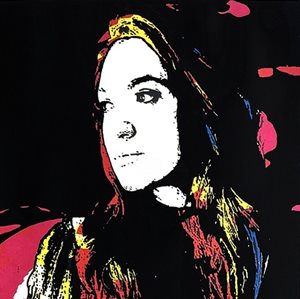
Image: Vivian Messimeris, Woman of Kobane #19
View our video of the exhibition at Hurstville Museum & Gallery below.
-
Stage 4 - 6 (Visual Arts): Guraban 2023
29 October 2022 – 29 January 2023
Combining historical material and objects, documents and photographs sourced from public and private collections along with the work of leading First Nations visual artists, Dennis Golding, Nicole Monks & Jenine Boeree, Djon Mundine, Marilyn Russell and Jason Wing, the exhibition presented stories associated with the Georges River in the local region, and highlighted multiple perspectives on Aboriginal connections to the river, its people and places.
It was developed in collaboration with local First Nations groups, individuals, artists and the Gujaga Foundation, a peak organisation leading Dharawal language and cultural activities, providing services relating to Aboriginal culture in eastern, southern and southwestern Sydney. The commissioned artworks have been made possible through funding from Create NSW.
The opening of this exhibition was held on Friday 28 October 2022. Welcome to Country: Uncle Michael West (Gamilaroi/Wailwan), Metropolitan Local Aboriginal Land Council. Guest Speaker: Dr Mariko Smith, Manager, First Nations Collections & Engagement, First Nations Division, Australian Museum.
Visual Arts education resource
This resource presents a case study for each artist which includes images and a description of the exhibited work, along with a Q&A with the artist discussing their artmaking practice, methods and materials. Accompanying each artist case study is a series of activities through which students may analyse and interpret works, and apply their understanding to their own artmaking practice. This resource supports the Australian Curriculum and NSW Syllabus outcomes for Visual Arts for years 7-12. Content has been designed with reference to the four frames and the Conceptual Framework.
Hurstville Museum & Gallery would like to thank Heather Davidson, Visual Arts teacher at Macquarie Fields High School, for her guidance and assistance developing these resources.
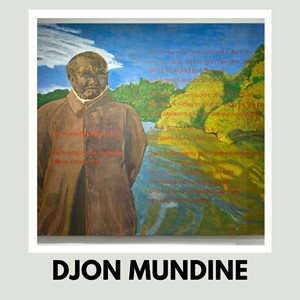
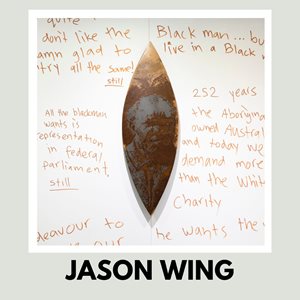
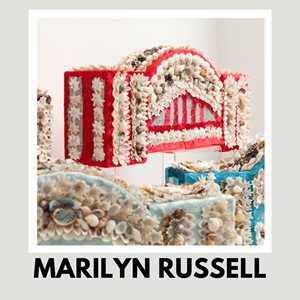
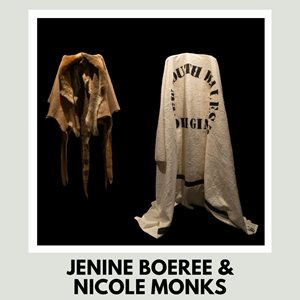
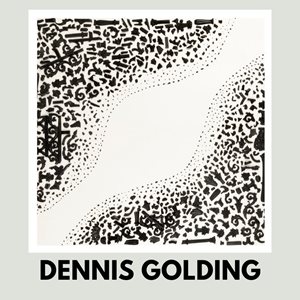
Exhibition catalogue
To view the exhibition catalogue and the virtual tour, please visit our Guraban exhibition webpage.
Images: Collection of miniature souvenir boomerangs, mangrove wood, made by Ancestors, various locations, 1926-1938. Collection: Hurstville Museum and Gallery (detail). Dennis Golding, Remnants, 2022, epoxy resin, concrete, dye, acrylic. Collection of the artist (detail).
Guraban: Where the Saltwater meets the Freshwater is supported by the NSW Government through Create NSW.
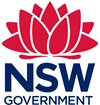
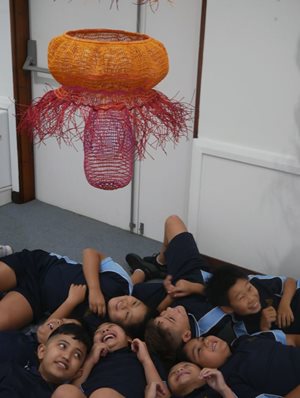
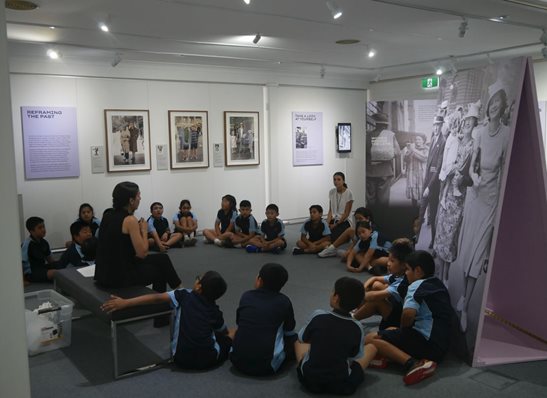
Thank you for your feedback.